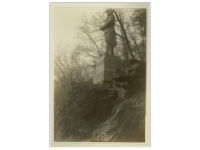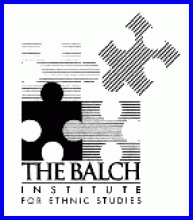Religious freedom is a right guaranteed to all Americans as stated in the Bill of Rights. The documents selected illustrate the struggle to obtain and maintain religious freedom from the 1600s through the 1800s. One document predates William Penn's arrival in the colonies with his vision for religious freedom. The other documents suggest how this theme in American history plays out for differing groups.
The Promise and Challenge of Religious Freedom, 1655 - 1844
The Promise and Challenge of Religious Freedom, 1655 - 1844
Essential Questions
Objectives
- Students will be able to cite specific textual evidence to support analysis of primary sources, connecting ideas to further understanding of the struggle to obtain religious freedom.
- Students will be able to evaluate the constant challenges Americans faced in practicing their faith.
- Students will be able to identify the political, social, and cultural relevance religion played in Philadelphia’s history from 1655 to 1844.
Other Materials
Suggested Instructional Procedures
Primary Sources
Jewish Petition to Dutch West India Company, January 1655
The Remonstrance of the Subscribers, Citizens of Philadelphia, September 5, 1777
Selected General George Cadwalader Correspondence, May 10-11, 1844
Process
- Introduce the subject of religious freedom. Review the role religion played in the settlement and founding of the nation (include major names, events, and vocabulary words).
- Have the students take notes on the author, year, title, and possible audience for each document.
- Assign the readings either as homework or in class.
- Listed below are a few questions that maybe used as review of reading comprehension, student based discussions, or incorporated into an essay.
- What does the date of the Jewish Petition to Dutch West India Company indicate? Who were the possible owners of the territory? What did the authors of the letter hope to attain?
- Besides William Penn's Charter, what do the remaining three letters have in common?
- In your opinion, did the people of Philadelphia honor William Penn's Charter in 1777 and 1844? Why or why not? Explain.
- In what ways have these documents challenged your understanding of religious freedom in Pennsylvania?
Vocabulary
The unit and lesson plan complement Preserving American Freedom, featuring fifty of the treasured documents within the vast catalog of the Historical Society of Pennsylvania. The documents read online will contain annotations that define and explain many key terms, figures, and organizations.
Related Resources for Students
Plans in this Unit
Grade Level
Duration
Standards/Eligible Content
Funder
The Freedom Teacher Fellow was funded through a Bank of America grant for the digital history project Preserving American Freedom.
About the Author
This unit was created by David Reader, HSP's Freedom Teacher Fellow in the summer of 2012. David is a social studies teacher at Camden Catholic High School.
Attention Teachers!
Let us know how you used this plan and be featured on our site! Submit your story here.


